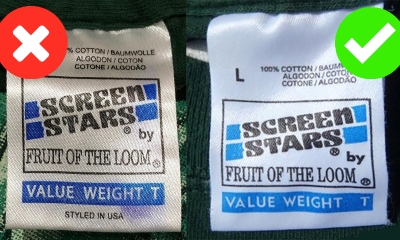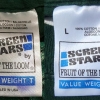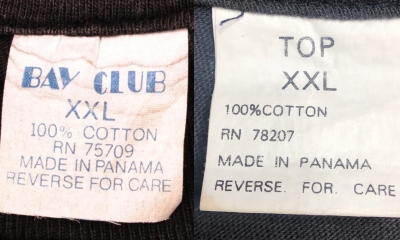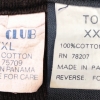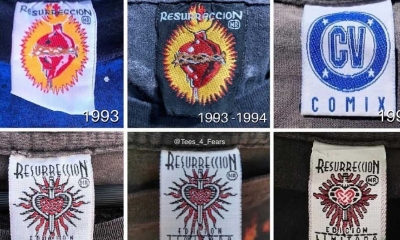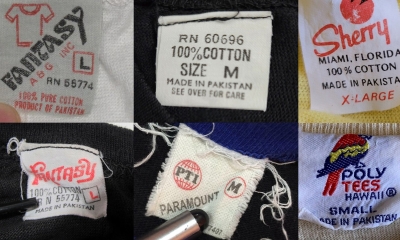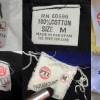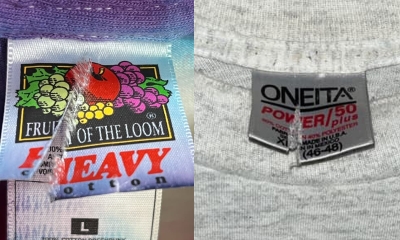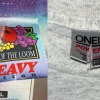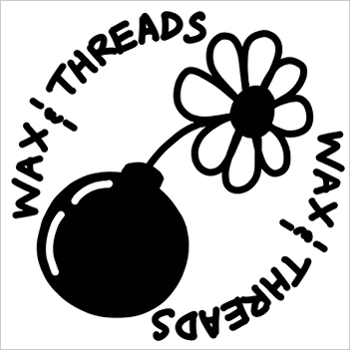Bootlegs
How to Determine if a Vintage T-Shirt Tag Has Been Sewn-In
In today’s day and age, where vintage t-shirts are fetching top dollar, dishonest people are using every trick in the book to fool us. Due to an influx of convincing counterfeit tags in the last decade, we recently authored a guide to authenticating a t-shirt using the tag. And we also started an archive of fake tags project so you can easily spot them in the wild.
But what if the counterfeiter extracts a genuine vintage tag from another shirt – and installs it into a fake?
What is a Sewn-in tag?
This is the practice of installing a foreign tag into (or onto) a t-shirt after the t-shirt has been manufactured. When it’s done by counterfeiters it’s been called a “Tag Swap” or a “Tag Installation.”
Are there legitimate reasons for a sewn-in tag?
Yes, several. For one, most licensing companies don’t manufacture their own t-shirts. Brockum for example used FOTL blanks and had their tag added during manufacturing. Sometimes, they are inserted under the seam, after manufacturing. Then there are situations where companies like Brockum and other licensees use alternative blanks for one reason or another.
Let’s say a sports-related licensee is working quickly to bring some Championship-themed t-shirts to a local market and it’s faster to use a local screen printer and their standard blanks. In cases like these, the company still wants to include its branding, so it’ll add its tag to the neckline, aftermarket. This is usually done on top of the neck, with one stitch.
So it appears suspicious, but it’s completely authentic.
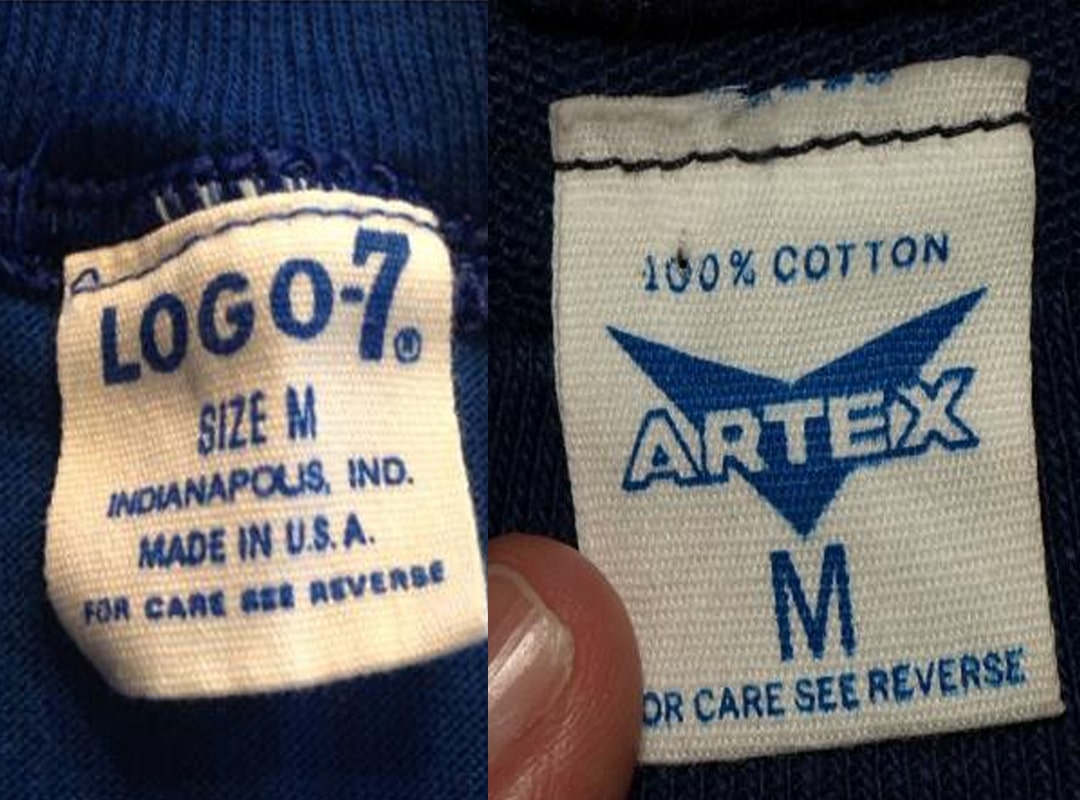
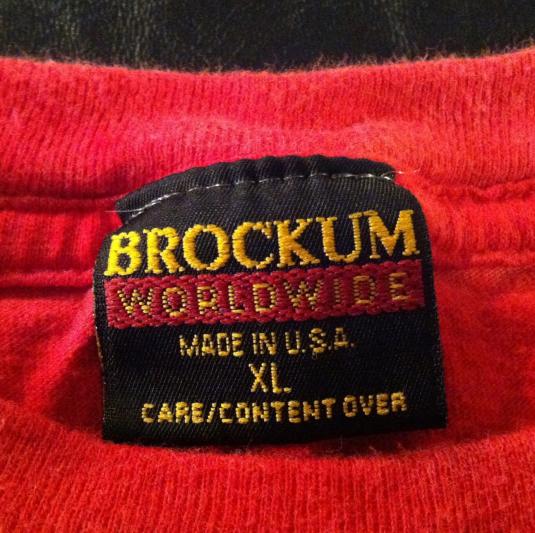
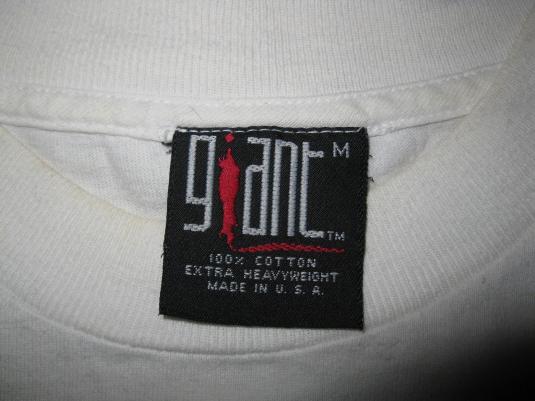
What about a Glued-In Tag?
What, what? Yes, this is a far less common version of a company trying to rebrand a tag. And it’s legit. This company has glued their tag overtop of the t-shirt’s original tag.



credit: legiteem8/oldirtypluchi
Are counterfeiters swapping tags?
Yes. The practice has picked up steam in the last couple of years. And if done well by a professional seamstress, it can be difficult to detect.
Let’s say someone has a 2000s reissue of a particular print, but, if they swap in a true 90s tag, the increased value can be well worth the effort. Attempting to remove the original tag and put a replacement that’s neatly tucked under the neckline flap is challenging. And it’s easy to damage the shirt in the process. But if the shirt is a reprint or reproduction and of relatively low value, the risk-reward factor can be appealing.
The worst case scenario they ruin a modern print with minimal value.
In the best-case scenario, they manage to trick someone into believing it’s an original and sell the shirt for hundreds if not thousands.
How to identify a tag that’s been re-installed under the flap
8 times out of 10, it’s pretty obvious, here’s what to look out for.
For one, the tag could be crooked, or off-center. Keep in mind this can be caused by manufacturing mishaps, so continue to study it for other evidence of tampering before calling it fake.
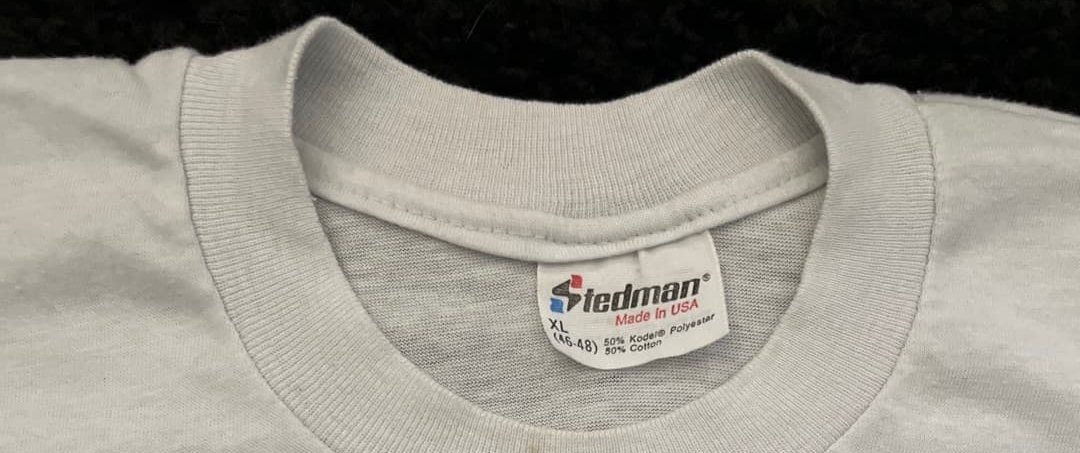
You can also do some research to make sure the tag isn’t foreign to that particular t-shirt. If you find a rare Nirvana t-shirt with a 3D Emblem tag, something is rotten in the state of Denmark. However, this can be challenging given the vast vintage t-shirt universe and licensing deals.
But if you can see there’s been a repair to the seam? Bingo. If the flap above the tag isn’t finished neatly and the stitch is messy, take note.
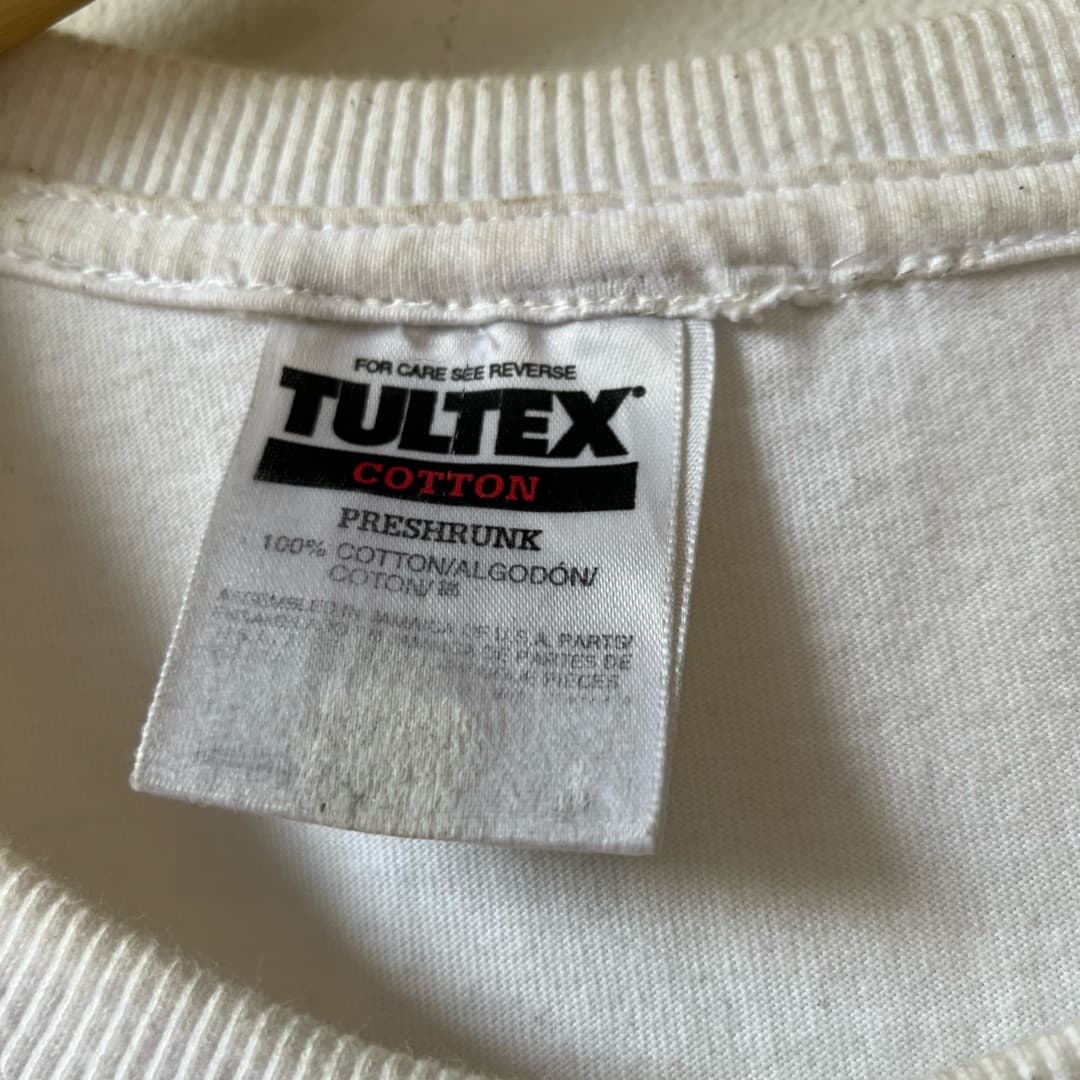
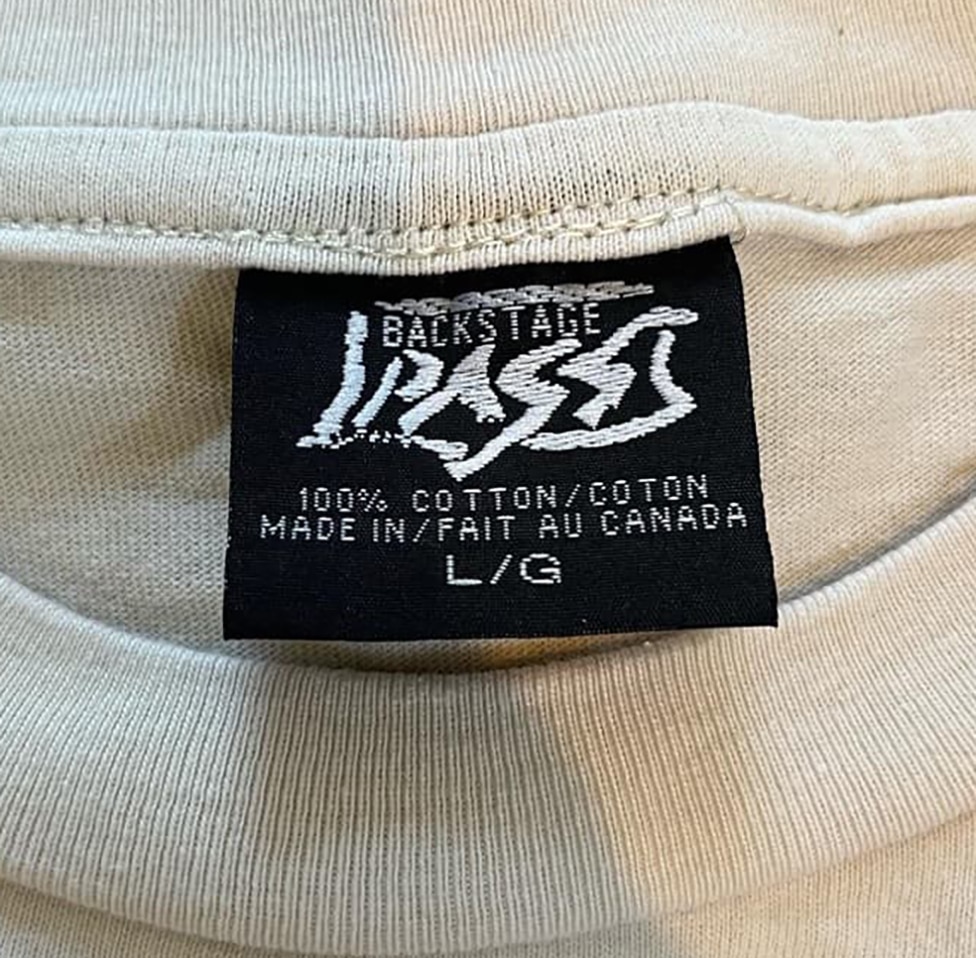
The tag above is not only sewn in, but it’s a fake Backstage Pass tag.
Keep an eye out for oddities like the one below – where a FOTL tag is on shirt that doesn’t have a flap of fabric the tag goes under?
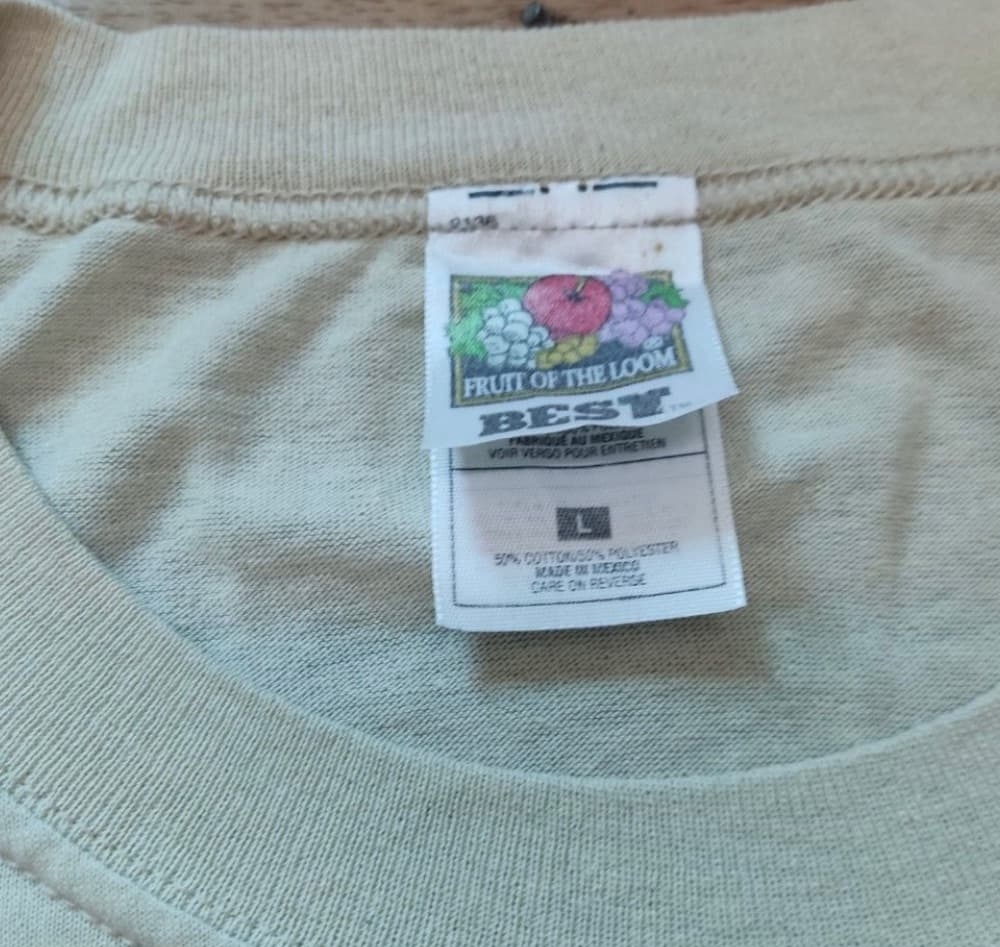
Consider the same thing on the rear of the t-shirt, and look for additional stitching and seams in that area. They might even be a different color. This indicates tampering given the new stitch is in the area the tag sits under.

But as stated previously, sometimes the new tags are inserted under the seam after manufacture, legitimately.
It’s easier to assess the other side because if done unprofessionally, you’ll be able to spot the goof-ups easier where the tag sits.
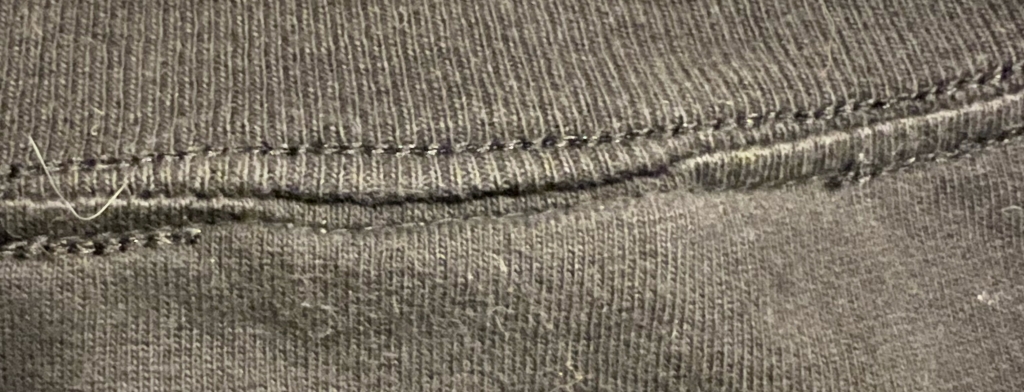
Look for thread holes on the tag from its original installation. This indicates the tag in question was part of an entirely different shirt.
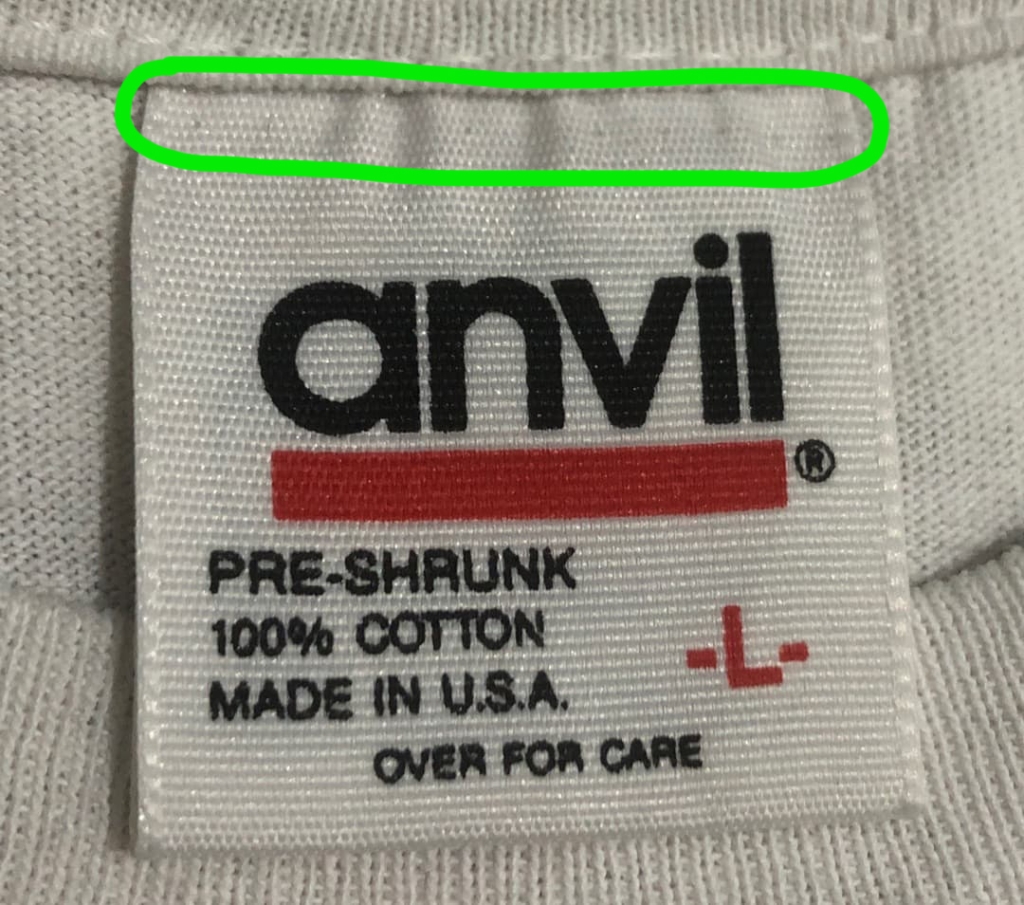

What about restoration?
Yes, I’ve seen examples of a legit vintage t-shirt that has a tag installation…
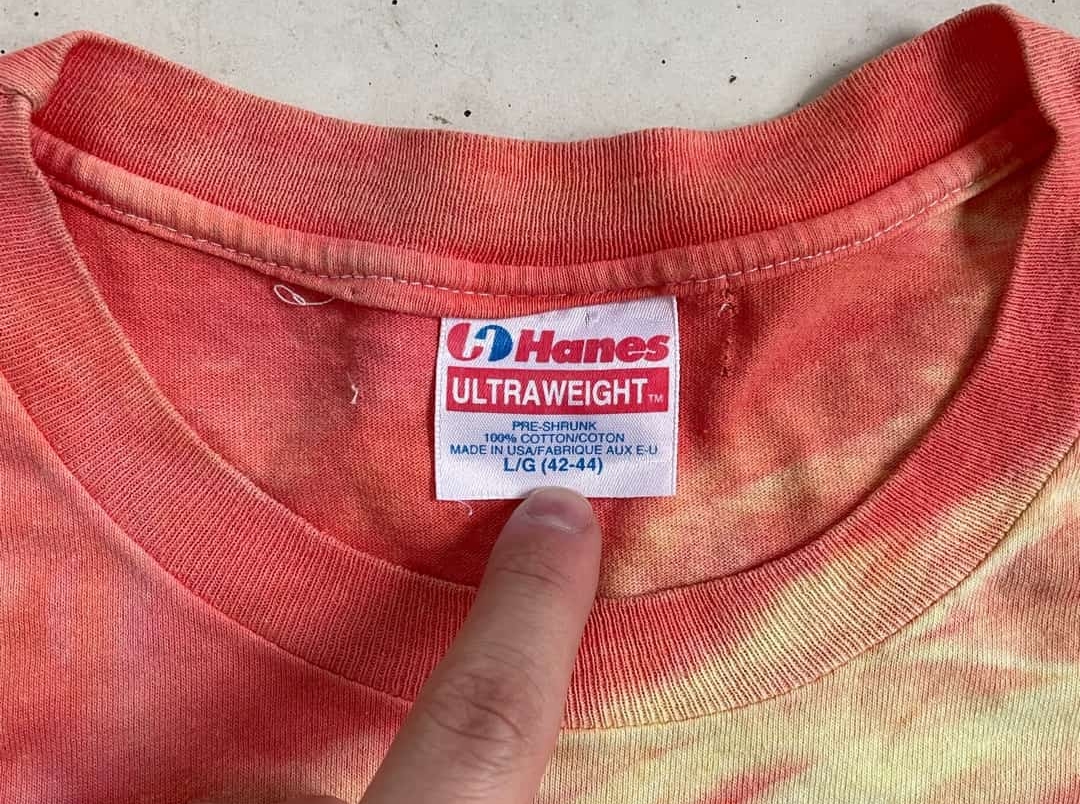
Why? Because the owner wanted to restore the item to its original glory and the tag was missing or had fallen off.
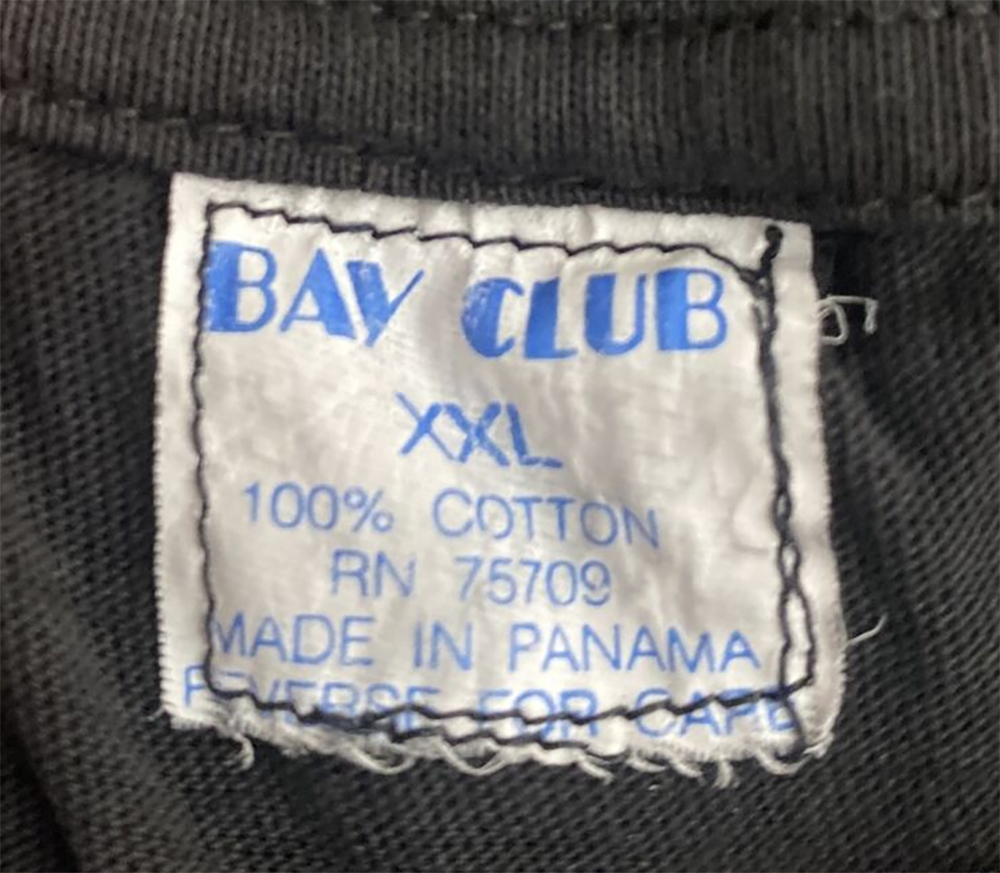
This gets into the debate on what’s acceptable in terms of vintage t-shirt restoration practices. But if you ask me, once you start meddling with the tag, you’ll leave evidence of it – and that will be a red flag to anyone looking to purchase it. They’ll likely assume there has been foul play.
Bye-bye t-shirt value.
What if they’ve managed to install the tag “seamlessly”?
There will always be some evidence, but it can be subtle. So your single best weapon, in this case, is matching the size of the shirt to the size listed on the tag.
Let’s say it’s a Brockum tag that’s M, but you measure the t-shirt pit-to-pit – and it’s 23 inches. That clearly doesn’t make any sense, because 23 inches is more in line with a Brockum XL. But how can you determine that? Well….use our tag archive.
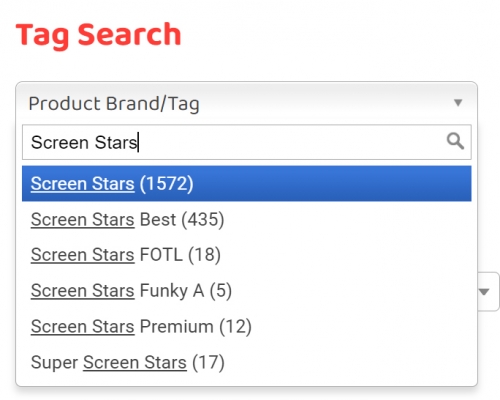
Consider the measurements of the t-shirt in question and compare them to the measurements in the same size, on the same tag, from the database. This is why, as an authenticator, I’m always curious about the measurements of a shirt. Not only can you figure out if a shirt that claims to be from the 1970s and early 80s – is more likely to be from the 90s – but you can determine if there’s a foreign tag.
You can also carefully examine the ribbing of the collar – to make sure it matches that particular brand. Additionally, you can examine the flap of fabric the tag sits under and make sure it’s the same width – and even if the fabric lines are a match too.
Jimmy founded Defunkd in 2004 when he started selling vintage t-shirts online. 20 years of experience later and he hasn't looked back since. Actually, he looks back all the time given he's a sucker for nostalgia. For more, check the history of Defunkd and Jimmy's Expertise.



